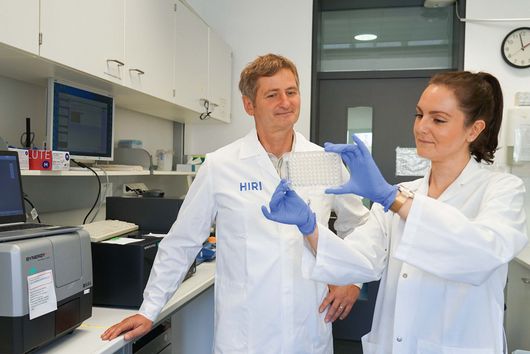
The viral construction kit
Redmond Smyth investigates how RNA viruses replicate and evolve
Not just since the COVID-19 pandemic, RNA viruses have been infamous as the causative agents of new infectious diseases. Other prominent examples include HIV, the virus that causes the immunodeficiency syndrome AIDS, and influenza viruses. Redmond Smyth and his team are studying how these viruses, whose genetic material is RNA, replicate, evolve, and spread. Smyth compares RNA viruses to kids playing with LEGOs, making complicated structures out of simple building blocks. After hijacking human cells, viruses similarly build viral particles from individual molecules in order to package their own genetic material and attack the next cell.
“RNA viruses are similar to kids playing with LEGOs, who make complicated structures out of simple building blocks.”
Redmond Smyth
The more we learn about this process, the sooner it is possible to intervene and stop further infections. That is why Smyth and his team are developing new methods to explore the architecture of the viral genome and its functions during the viral life cycle. Here, the RNA structure plays a crucial role. “Our goal is to understand and be able to influence these processes at the molecular level so that pandemics can be countered better and faster in the future,” says Smyth.






